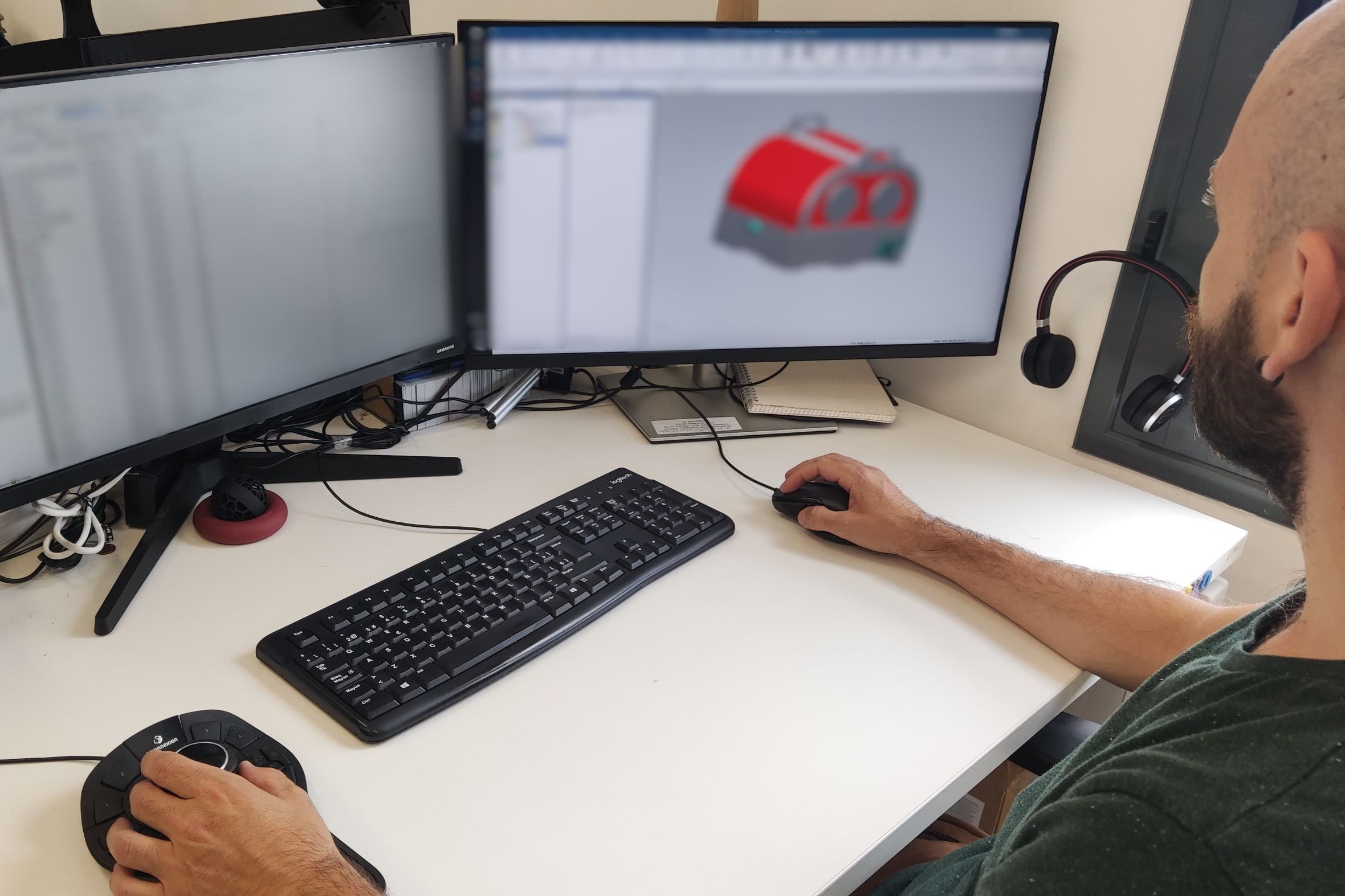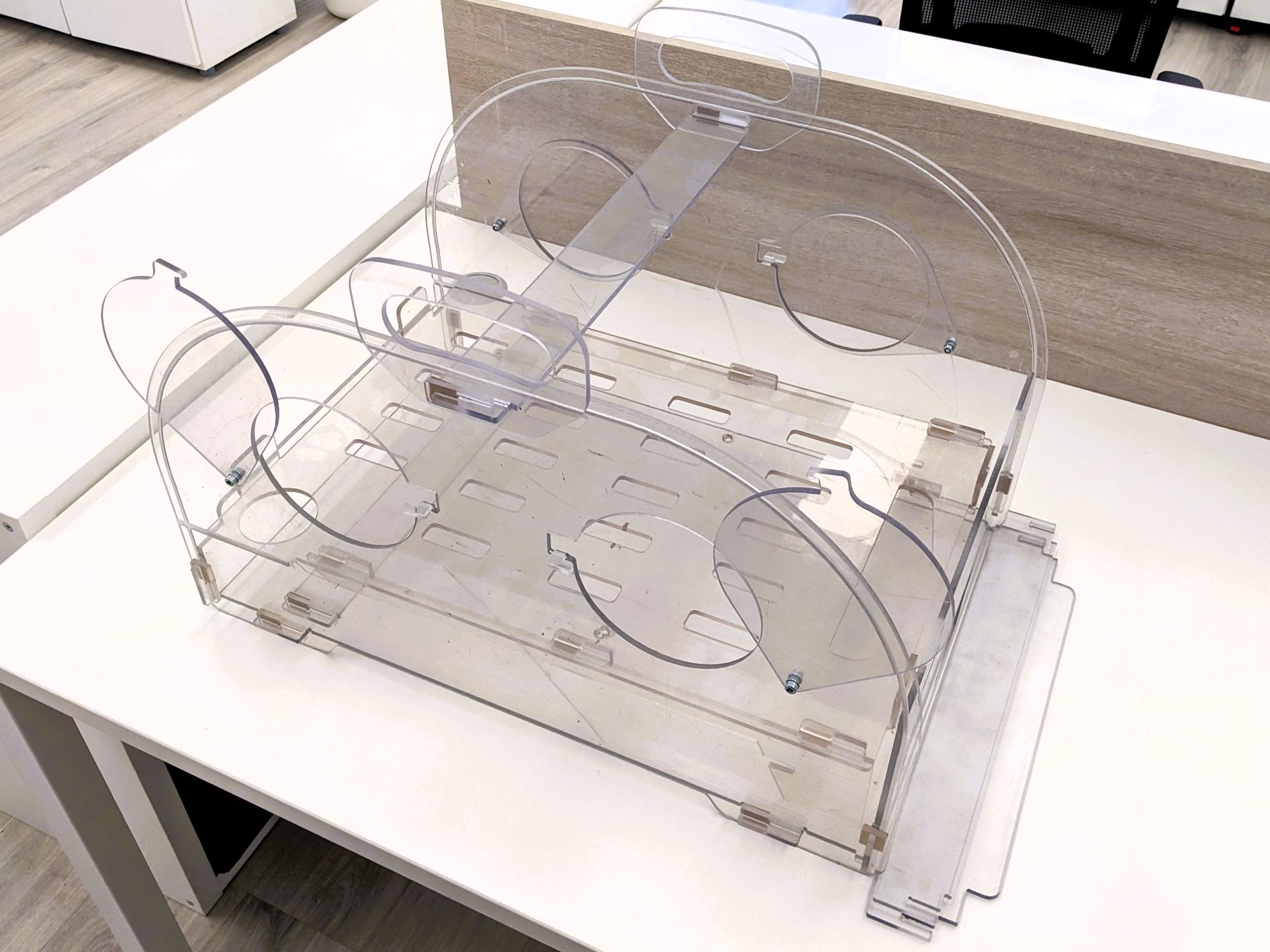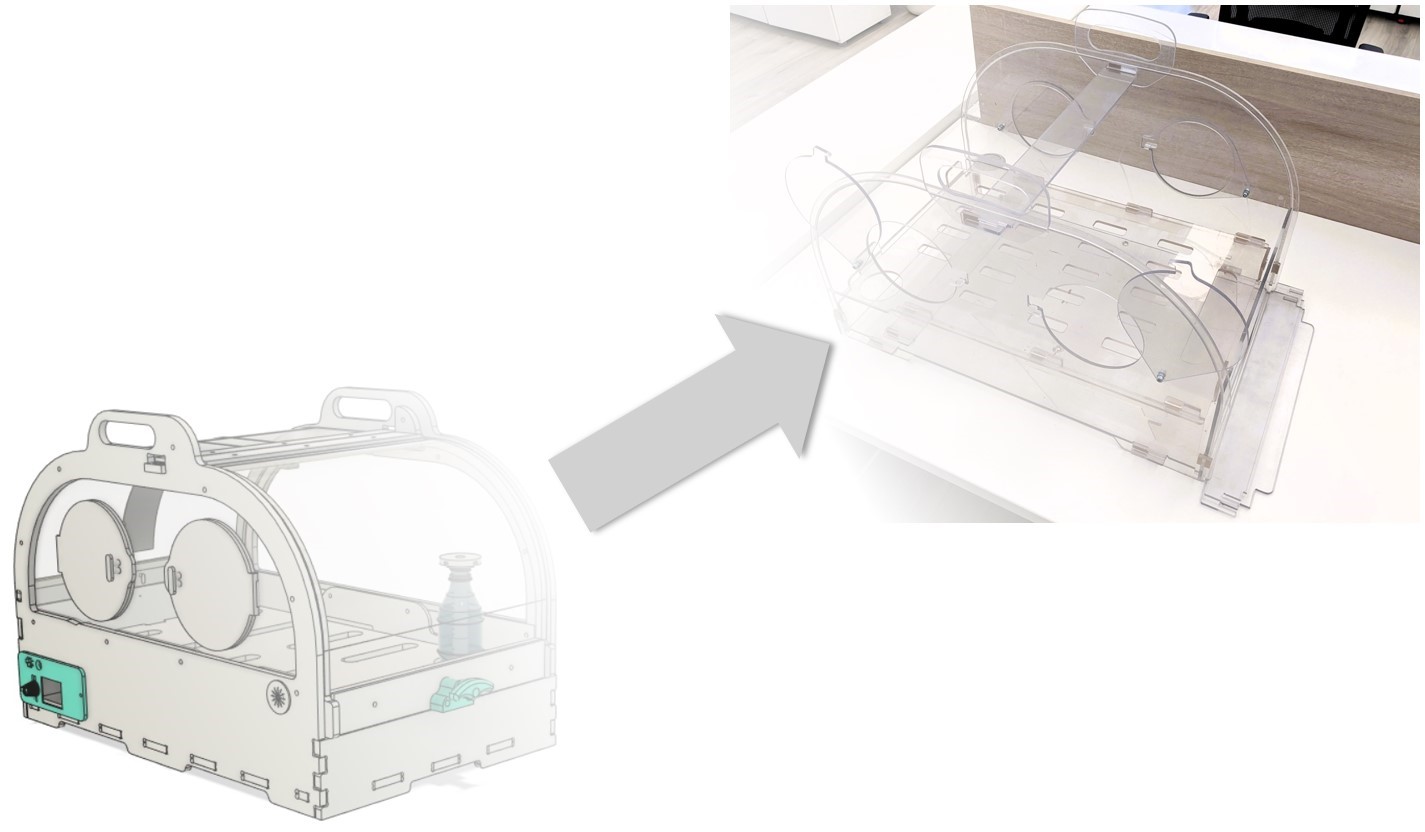What was the challenge or problem to solve?
The project aimed to redesign and optimize a low-cost climate-controlled crib for use in resource-limited areas. This initiative focused on providing a device that, while not replacing certified medical equipment, could improve neonatal care conditions in places where such devices are not available. The original design presented several complications that significantly increased production costs, including the use of various types of screws, materials, and manufacturing processes. These characteristics made its production costly in terms of both time and resources.

The success of the project would be measured by its ability to meet these objectives and produce a high-performance crib at a very low cost. The Product Development team was responsible for carrying out this task.

To address this challenge, the project began with an exhaustive analysis of the device’s requirements and restrictions, considering both the initial design and previous iterations. This was done through visual inspection and using 3D modeling software and measurement tools, which allowed the team to gain a comprehensive understanding of the project and identify all key points to consider.
Subsequently, various modifications and improvements were proposed to facilitate the manufacturing, assembly, and handling of the device. A secondary objective was to design a crib that, once disassembled, was as compact as possible and avoided the use of fastening systems that required tools. 3D modeling tools were again used to propose these alternatives and select the improvements to be implemented.
Once the improvements were selected, the design and development of the individual parts began, considering the manufacturing restrictions and the initial requirements of the device. Before manufacturing the final demonstrator, the fastening systems were manufactured and tested in isolation using CNC machining. This allowed for the necessary adjustments to optimize the geometry of the parts.
Finally, a demonstrator device was manufactured, assembled, and tested to validate the final design. This crucial step ensured that the device met all expectations before moving on to large-scale production. The newly developed crib not only met the established objectives but also proved to be a successful example of how the optimization of processes and materials can result in high-quality products at a low cost.

